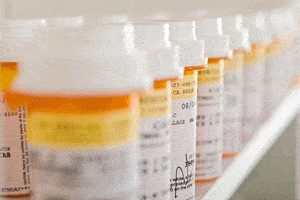
UDT used judiciously and paired with clinical expertise can be invaluable in ensuring injured workers get the right medications at the right time. Understanding some of the basics will help you get the best bang for your UDT buck.
Click Link to Access Free PDF Download
“The 6-Step Process To Determine Workers’ Comp Injury Causation”
Types of testing
- Forensic. UDT has been around for decades, beginning with its use to identify illicit drug users in criminal and civil proceedings as well as the workplace. This forensic, or ‘gotcha!’ model is designed to determine yes or no that someone is taking certain, typically illegal drugs. An initial screening — presumptive — test is performed and any positive results are sent for confirmation. The types of tests include in-office point of care. Results from these tests can come in minutes. However, they are not necessarily designed to detect the use of medications at therapeutic doses, something critical in a clinical setting. Also, the tests are not available for all drugs, such as synthetic drugs of abuse. Since oxycodone is a semi-synthetic opioid, it may not always be detected in these tests.
- Clinical. This model puts the focus on the patient-provider relationship and is used as part of patient care in various settings, including pain management. The idea here is to identify the presence of specific prescribed medications, non-prescribed medications and illicit substances to benefit the therapeutic goals of the patient. Definitive testing, typically used in this model, provides information about specific drugs and metabolites and can detect drugs at much lower concentrations, which presumptive tests do not. The results of these tests, however, may not be available for 24 hours or more.
The type of test used for an injured worker depends on a variety of factors, including the physician’s assessment of the patient’s risk. The types of medications also has a bearing on the most appropriate tests. If there are multiple opioids, for example, presumptive tests may not provide enough information to help the physician.
Why Test:
Guidelines published for prescribing opioids to injured workers support the use of UDT to help identify safe and effective treatment options. Some of the reasons to undertake UDT include:
- Risk assessment. Research shows many prescribing physicians are not aware of their patients’ past and current drug-taking behavior. Clinical UDT provides clear evidence of the patient’s drug taking behavior, which is vital to the provider’s treatment plan, risk assessment, and interaction with the patient.
- Clarification. In addition, patients often do not know specifically which drugs they are taking. So the drug test can add to the provider’s understanding of the patient’s current medical treatment.
- Data consistently shows about 18 percent of workers’ comp patient samples do not indicate they are taking the prescribed drug. Given the problems with diversion, misuse, and abuse, it is clear that workers’ comp patients may be complicit — wittingly or not — in the inappropriate consumption of prescription drugs.
How Often to Test
How often should an injured worker on opioids be monitored through UDT? This is one of the key questions and problems surrounding UDT. Too much testing is a waste of money, while too little testing may lead to missed opportunities for intervention and cause the claim to deteriorate.
Physicians can determine how often UDT should be conducted based on the injured workers’ risk of medication misuse, abuse or diversion; and the importance of adherence, such as if the injured worker is being weaned off certain drugs.
- Low risk. Injured workers who have little to no risk should be tested annually.
- Moderate risk. Injured workers who have some red flags indicating they are potentially at risk should be tested a few times per year.
- High risk. Injured workers with a high propensity for medication abuse should be tested frequently, in some cases even monthly.
What to Do With The Results
One of the problems with UDT is the lack of follow through after an unexpected or inconsistent test result. Faced with evidence that the injured worker is not taking her medications as prescribed, and/or is taking medications that were not prescribed — including illegal substances — some intervention is necessary. The results may be a clue that the injured worker is getting medications from more than one provider. At the very least, the provider should discuss the results with the injured worker. Unexpected results occur on average more than half the time.
Once the test results are available there are several steps that may be beneficial.
- Work with a PBM. A pharmacy benefit manager can help interpret the test results and provide guidance on what the next steps should be. An unexpected test result may be due to a variety of factors; such as drug-drug interaction, or a contaminated or diluted sample. The answer is not always black and white, and a PBM or other expert can help decipher what the results actually mean.
- Additional clinical outreach.
- Follow-up testing.
- Peer-to-peer review.
- Change in medication therapy.
Conclusion
UDT can provide much needed information to help guide a claim. However, it should be part of an overall strategy and not the only tool used. It’s important to know the benefits and limitations of UDT and use it to help understand the whole picture of the injured worker.
For additional information on workers’ compensation cost containment best practices, register as a guest for our next live stream training.

Contact: mstack@reduceyourworkerscomp.com.
Workers’ Comp Roundup Blog: https://blog.reduceyourworkerscomp.com/
Live Stream WC Training: http://workerscompclub.com/livestreamtraining
©2017 Amaxx LLC. All rights reserved under International Copyright Law.
Do not use this information without independent verification. All state laws vary. You should consult with your insurance broker, attorney, or qualified professional.






